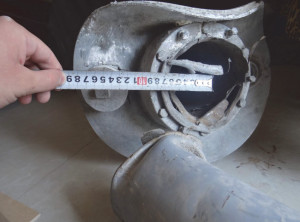 Could the Iranian government be the supplier of the chemical rockets that killed hundreds of civilians?
Could the Iranian government be the supplier of the chemical rockets that killed hundreds of civilians?
New analysis of rockets linked to the sarin gas attack on the suburbs of Damascus on 21 August 2013 has concluded that the rockets were most likely fired by multiple launchers and had a range of about three kilometres. This means they could have well been fired from positions that were firmly under the control of Syrian regime forces at the time – something that Syrian regime supporters have been trying to cast doubt on.
Moreover, the new analysis suggests that the rockets were propelled by motors taken from a common family of 122-millimetre conventional artillery rockets known as the BM-21. The BM-21 line is a globally abundant system of ground-to-ground rockets, widely knowns as Grads, that originated in the Soviet Union but have been reproduced and updated by many countries, including post-Soviet Russia, China, Egypt and Iran.
Source: The New York Times, http://www.nytimes.com/2013/12/29/world/middleeast/new-study-refines-view-of-sarin-attack-in-syria.html
COMMENT FROM THE EDITOR:
Interestingly, one of the report’s two authors, prof. Theodore Postol, was the same rockets expert that the investigative journalist Seymour Hersh used to question the widely held story that the attack was carried out by the regime. Our readers may remember our long comment at the time on Hersh’s article, which was published in the London Review of Books in early December 2013, debunking his claims, including his quotes from prof. Postol.
 English
English  فارسی
فارسی  العربية
العربية 




 On Twitter
On Twitter